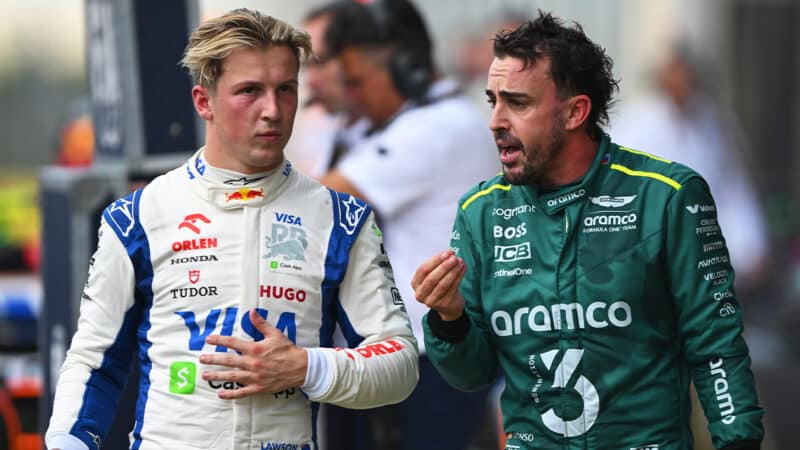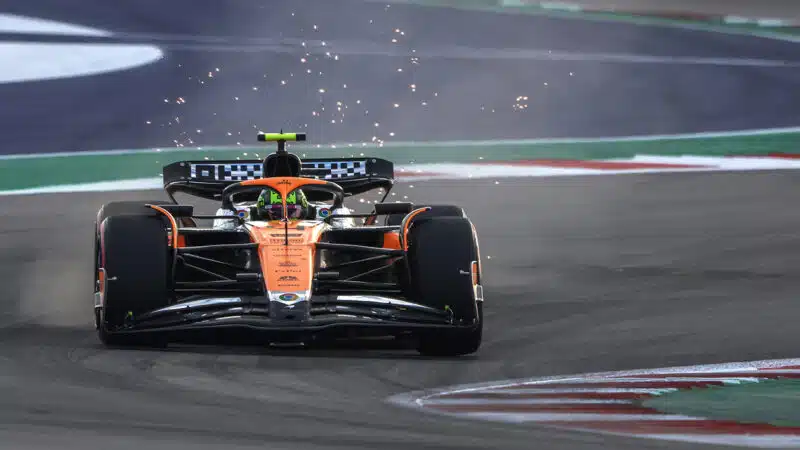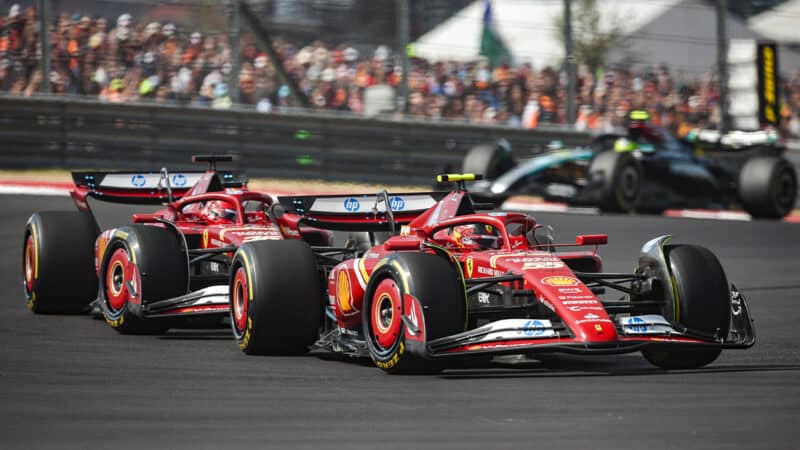As Red Bull, McLaren and Mercedes all brought upgrades here, Ferrari remained unchanged. Team boss Frederic Vasseur believes this may have been part of the advantage. “It’s quite often that when you are bringing something worth about a tenth or even less, you are also struggling a bit more sometimes on the set-up and it’s not obvious that you will have a step forward in terms of results more than performance.” This generation of car, where ground effect grip is traded with mechanical compliance and aero balance, is very tricky to model in simulation. The more running data, the greater your chances of finding the sweet spot. You just need to be convinced there is nothing fundamentally wrong with the car – and that’s not something which can be said at the moment of Mercedes or recently by Red Bull.
Ferrari ran its weekend super-smoothly, and made what in hindsight were great decisions. They were very focused in what they were trying to achieve in fully exploiting the car here. “Austin is also a strange one,” continued Vasseur, “because you have the first part, very high speed, bumpy, and the last part is low speed, smooth. And you have to decide where you want to be competitive and the same in the race. I think the other teams went a little bit in all directions between Saturday and Sunday but we kept the advantage. In terms of tyre deg it’s a big advantage to be in good shape in the last part.” The Ferrari’s tyre deg was the decisive advantage.
That had been suggested in the previous day’s sprint when, despite racing each other hard for several laps and then fighting their way by George Russell’s Mercedes, they still had the pace to catch, and in Sainz’s case, pass, Norris’s McLaren. With a few more laps than were available in the sprint, they may well have been able to challenge Verstappen’s winning Red Bull.
Lando Norris
Although Norris opened a door that Verstappen was always going to thrust himself into at the first corner – and thereby lost any chance of fighting out the win – his qualifying performance was fantastic.

Run out wide at Turn 1: Norris and Verstappen open the door to Leclerc
Eric Alonso / DPPI
The McLaren doesn’t like braking into slow corners or super high-speed corners (where its aero efficiency falls away), two things which are crucial here. So it wasn’t in its usual hyper-competitive shape. It was something of a bouncing handful through the fast bumps of the Esses and not a car which responded to his usual silky cajoling. Instead it needed to be hustled hard. It took him until Q3 to find the commitment to do that – a confidence team-mate Oscar Piastri never did fully acquire. Norris’ first Q3 lap was a thing of wonder, raggedly magnificent in using up every inch of track while keeping the forward momentum. Verstappen’s Red Bull was a way faster and more comfortable ride through the Esses and looked all set for pole – until a bit of over-commitment on the brakes for the tricky Turn 19. No worries, he thought, sure that the pole lap was in there and that he’d secure it on the final run. But no-one got to complete their final runs thanks to Russell crashing his Mercedes hard – at that increasingly notorious Turn 19 (where Lewis Hamilton would spin out of the race on lap 2).
Norris drove a smart and fast race and his overtaking incident with Verstappen, passing him off-track after being forced there, was just one of those things which come with having a line to define the track’s limits rather than a bit of grass or gravel. But it was on Saturday that he delivered something truly special.
Liam Lawson
Taking the power unit penalty which came with Daniel Ricciardo’s former seat Liam Lawson started 19th and finished ninth, making some overtakes along the way, notably on his sprint day nemesis Fernando Alonso. He also comfortably beat team-mate Yuki Tsunoda who started eight places ahead of him. As an audition for the ’25 Red Bull seat on a day when Sergio Perez was lacklustre in finishing seventh it could hardly have been better.

Alonso dispenses his F1 wisdom after the Austin sprint
Rudy Carezzevoli/Getty via Red Bull
We only saw his qualifying form in Q1 – when he went third-fastest. Yes, it came as the track grip was ramping up but it was still quicker than several guys out there in ostensibly faster cars. His race was aided by his strategy of starting on the hard tyre and running long. The flurry of relatively early stoppers in the midfield – triggered by Kevin Magnussen going for the undercut on Pierre Gasly – helped his cause.
But he maximised every one of those bits of fortune super impressively. He’s quick and he races well.


